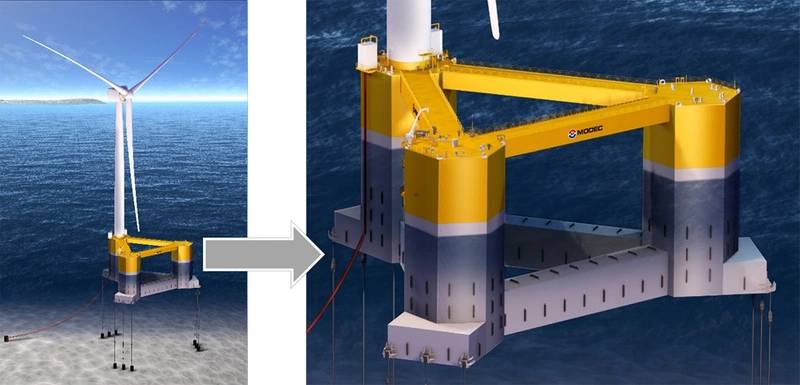
MODEC and Toyo Construction have jointly secured an approval in principle (AiP) from ClassNK for floating structure and tether system with tether pile foundation for tension leg platform (TLP)-type floating offshore wind turbine.
The acquisition of AiP was one of the tasks of the Japanese national research and development agency NEDO’s Green Innovation Fund Phase 1 project, which was carried out by MODEC, Toyo Construction, Furukawa Electric and JERA.
The AiP has been obtained based on the drawings and related documents of the floating structure and tether system provided by MODEC, and the tether pile foundation provided by Toyo Construction.
In 2020, MODEC obtained AiP for the floating offshore wind turbines from DNV.
This time, for the demonstration project in Japan, both companies have obtained another AiP from ClassNK with the aim of pre-empting some of the evaluation items for wind farm certification and classification surveys that will be required during the demonstration project.
In acquiring this AiP, both companies also conducted a study on Japan's unique environmental conditions, such as earthquakes and tsunamis, and received valuable opinions from ClassNK, including the opinions of experts, which will be reflected in the design and the development during the expected demonstration project.
 (Credit: MODEC)
(Credit: MODEC)
MODEC has been providing competitive floating solutions for the offshore oil and gas industry and recognized as a leading specialist for floating oil and gas production systems such as Floating Production Storage and Offloading (FPSO) vessels and TLPs.
TLP systems are expected to reduce the cost of power generation because the high stability of tension mooring to a seafloor foundation enables installation of large 15 MW-class wind turbines, which have the potential to become mainstream in the future, on compact floating platforms.
In addition, TLP’s mooring lines are expected to be more socially acceptable than other mooring systems because they can reduce the amount of space occupied under the sea by approximately 1/1,000 (for example, in 100 m water depth) and have less impact on existing businesses such as the fishing industry and ship operations.


